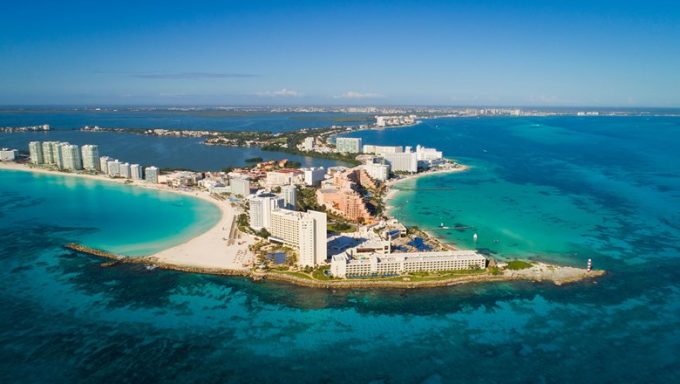As of Sunday, February 07, 2021 Quintana Roo had accumulated 19,343 infections and 2,287 deaths. Cancun and Playa del Carmen, the state’s two main tourist destinations, accounting for 60.9 percent of the conditions.
QUINTANA ROO Mexico (EFE) – Full beaches and large open-air parties in the Mexican Caribbean, Mexico’s star tourist region, with the beach resort of Cancun as its flagship, have seen a spike in infections after the winter vacations, with as many cases in January as in the most critical period of the first wave of the COVID-19 pandemic.
The past holiday period attracted thousands of visitors to the Mexican Caribbean, located in Quintana Roo. These tourists are escaping from other states and countries with strict sanitary measures, and their arrival brought economic respite to the region that brings the most money to the country from tourism while causing an escalation in infections.
According to data from the Secretary of Health of Quintana Roo, Alejandra Aguirre, the pandemic registered its worst moment from June 15 to July 15, 2020. In those 30 days, 3,114 positive cases were accumulated, a figure that was already surpassed between January and the first five days of February, with 3,176 cases.
EARLY REOPENING
This second wave of contagions is mainly due to the early reopening of the economy of a state like Quintana Roo, which depends almost exclusively on tourism and which in 2020 received some eight million domestic and foreign visitors in all its destinations. Cancun, the jewel in the crown, directly received 3.3 million visitors.
Since September, the state has been governed by a state epidemiological risk traffic light without following that of the federal government. And so, while on the federal map it was colored orange, great danger, on the local map, it was painted yellow, which allowed hotels and restaurants to expand their service capacity and at the same time gave them an economic respite.
The yellow color was maintained throughout the winter holiday season. According to statistics from the Hotel Association of Cancun, Puerto Morelos, and Isla Mujeres, the northern zone of the state began December, with 4 out of 10 rooms occupied and ended with an even higher occupancy of almost 50 percent.
Cancun International Airport alone registered more than 400 daily operations, with flights from the United States, Colombia, Argentina, Venezuela, Cuba, Canada, and Panama.
To this was added the relaxation of sanitary and prevention measures, in addition to massive parties, clandestine social events, overcrowding in restaurants and beach clubs, factors that produced an escalation of cases since mid-December, said this week the state Governor, Carlos Joaquin Gonzalez.
The state government announced that the state would change, as of Monday, to orange, a high danger color, to reduce mobility in the area.
As of Saturday, Quintana Roo had accumulated 19,229 infections and 2,277 deaths. Cancun and Playa del Carmen, the state’s two main tourist destinations, accounted for 60.9 percent of the infections.
The highest hospital occupancy rates are in the Riviera Maya (56 percent), Playa del Carmen (27 percent), and Cancun (26 percent).
“We are stressed because the colleagues who are in charge of COVID are exhausted, tired because there have been upturns, new admissions to the hospital.” Luis Alberto Tzib, one of the head nurses at the General Hospital in Cancun, where more people have arrived than at any other point in the entity, told Efe.
“It is very stressful because the number of hospitalized patients is increasing again, although, after the news that the vaccines were coming, we became a little calmer,” he added.
According to Luis Alberto, the patients who have been admitted in the last few days have referred in the medical reports “to have relaxed the sanitary measures and celebrated meetings or trips to some of the various destinations in the Mexican Caribbean.”
In addition, the nurse pointed out that in the last few weeks, younger and younger patients, around 40 years of age, have been admitted and called on the population not to lower their guard and to take extreme care.
As of Sunday, February 7, Mexico had 1,932,145 infections and 166,200 deaths.



